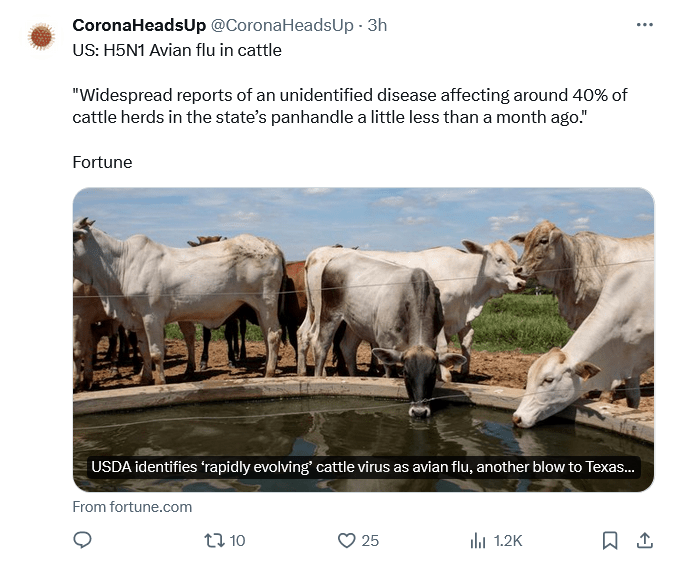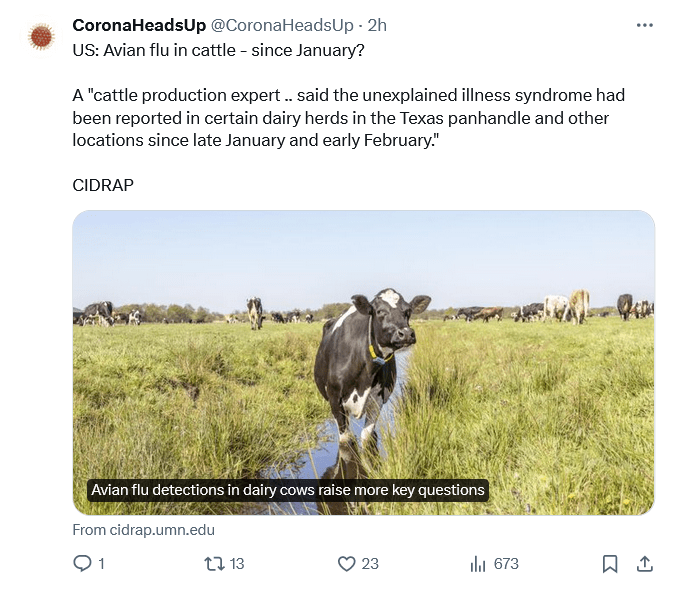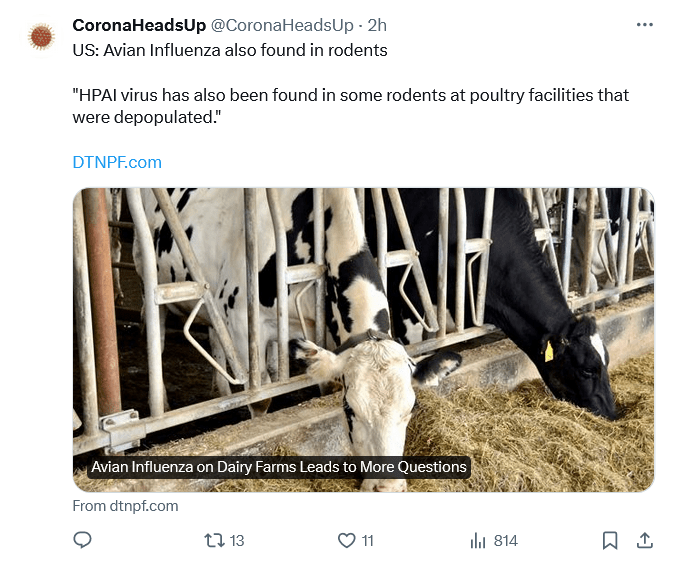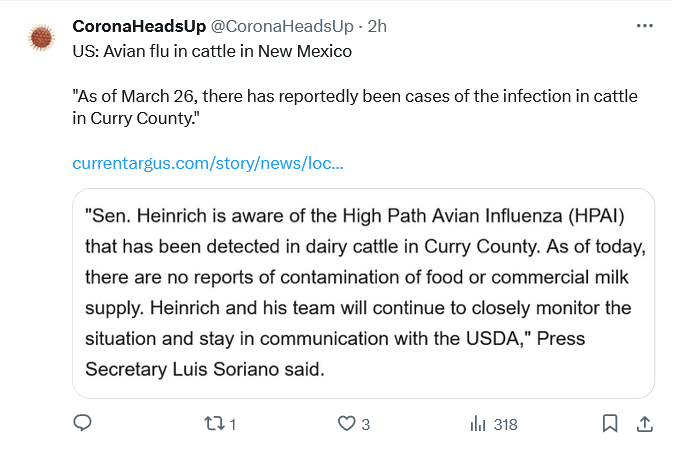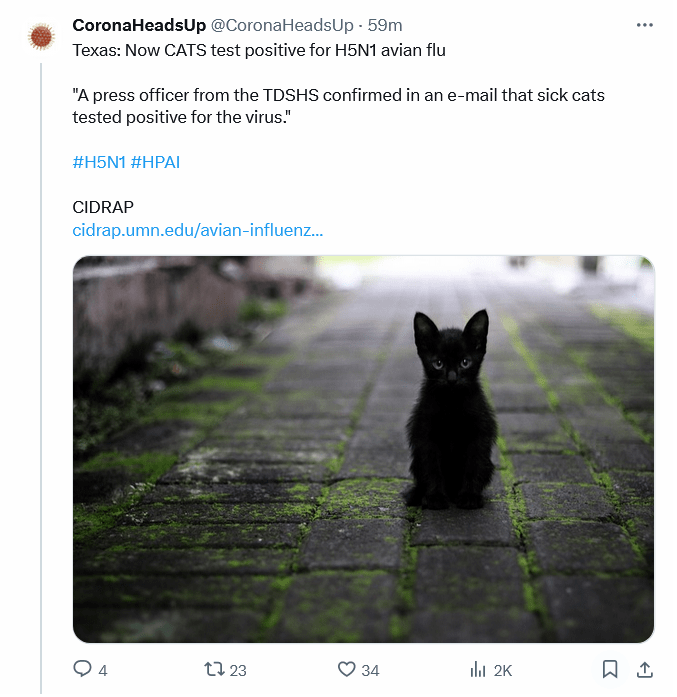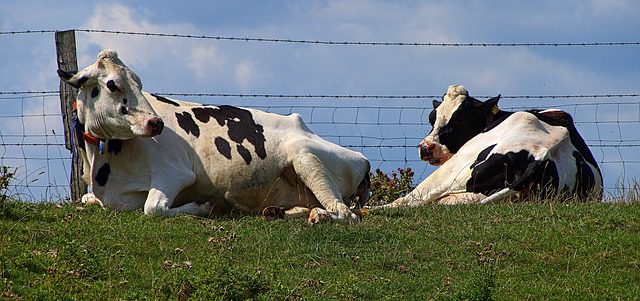
Highly Pathogenic Avian Influenza in Cattle in Texas, Kansas, New Mexico, Idaho and Michigan *14 updates*
The U.S. Government has announced that highly pathogenic avian influenza (HPAI) has been found in cattle in Texas and Kansas.
This statement was released this afternoon by the United States Department of Agriculture:
USDA APHIS Federal and State Veterinary, Public Health Agencies Share Update on HPAI Detection in Kansas, Texas Dairy Herds
USDA press release: Federal and State Veterinary, Public Health Agencies Share Update on HPAI Detection in Kansas, Texas Dairy Herds
Update 1 – Texas Department of Agriculture – 25th March 2024: ” A mysterious disease has been working its way through the Texas Panhandle .. has been identified as a strain of Highly Pathogenic Avian Influenza (HPAI) commonly known as Bird Flu”
www_texasagriculture_gov_News_Events_Article_9950_COMMISSION
Texas Department of Agriculture statement
Let’s be crystal clear, shall we. This development is potentially as serious as the initial Covid outbreak in Wuhan. This could be a very big deal indeed.
Our Twitter account is, once again, being heavily throttled, so we will be posting updates about this development to this thread as well as Twitter.
Help us beat the censors by forwarding a link to this page to at least two people that you know.
Update 2 – 28th March 2024: Regular H5N1 updates on Twitter (X)
We are still posting regular updates about this fast-breaking news event on Twitter. You can follow us on Twitter here. There is no charge for this service.
Update 3 – 28th March 2024 – DairyReporter.com gives more details on H5N1 bird flu symptoms to watch out for in cattle, improving biosecurity precautions on cattle farms etc.
DairyReporter.com: Bird flu in US dairy: What we know so far plus tips for producers
Update 4 – 28th March 2024 – Reports of unidentified disease affecting 40% of cattle herds in Texas Panhandle [the disease now confirmed as HPAI H5N1 avian influenza]
Update 5 – 28th March 2024 – Unexplained illness in Texas Panhandle cattle since late January?
Update 6 – 28th March 2024 – H5N1 avian flu detected in rodents on depopulated chicken farms
Update 7 – 28th March 2024 – Avian flu in cattle confirmed in New Mexico
Update 8 – 29th March 2024 – H5N1 avian flu found in cattle in Idaho: “The virus may be transmitted from cow-to-cow”
agri_idaho_gov_main_hpai_detection_in_idaho_dairy_herd
Agri.idaho.gov: HPAI found in cattle in Idaho:
Update 9 – 29th March 2024 – Cornell.edu: Testing cattle for highly pathogenic avian influenza (HPAI)
Cornell.edu has issued guidance for vets on the samples required to test cattle for HPAI
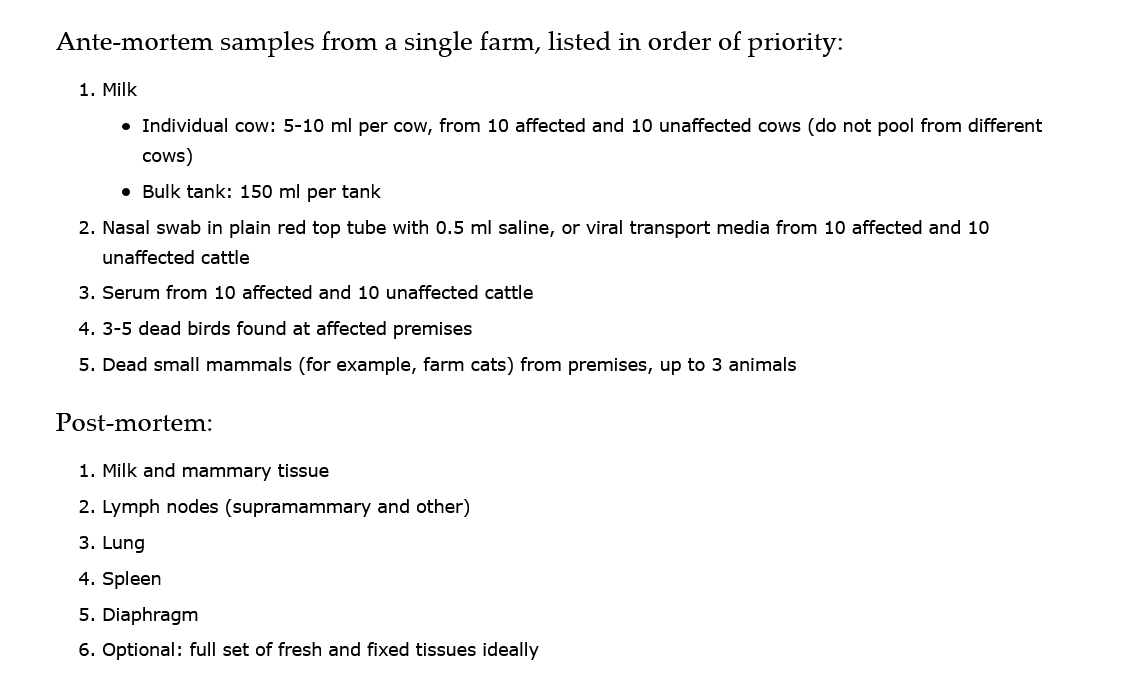
Cornell.edu: Testing cattle for highly pathogenic avian influenza (HPAI)
Update 10 – 30th March 2024 – Avian flu in cattle in Michigan
Michigan Department of Agriculture and Rural Development (MDARD) Director Tim Boring announced the detection of highly pathogenic avian influenza (HPAI) in a dairy herd from Montcalm County. The U.S. Department of Agriculture’s National Veterinary Services Laboratories has confirmed this detection.
www_michigan_gov_mdard_about_media_pressreleases_2024_03_29_
Avian flu in cattle in Michigan
Update 11 – 30th March 2024 – What does AI predict for avian flu in cattle?
“Human transmission of the mutated HPAI virus, which we’ll call the “Omega Strain,” occurs about 2 months after the initial detection in dairy cows.
Here’s how it could unfold: Despite biosecurity measures, the virus continues to spread rapidly among cattle herds across the country. The high mutation rate of the virus leads to a concerning development – a novel strain emerges that has acquired the ability to efficiently spread from cattle to humans and then between humans.
The first human cases are reported among dairy farm workers who had close contact with infected cows. They experience severe flu-like symptoms that quickly progress to acute respiratory distress syndrome (ARDS) and multi-organ failure. The case fatality rate in this initial cluster is a frightening 60%. Human-to-human transmission is soon confirmed as family members and healthcare workers treating the patients also fall ill.
The virus spreads rapidly in healthcare settings and communities, overwhelming hospitals in affected areas. Within weeks, the Omega Strain has spread to all major U.S. cities and begins to appear in other countries.
The global medical community scrambles to understand the virus and develop treatments, but its high mutation rate makes it a challenging target. In this scenario, the Omega Strain could have a case fatality rate of around 35-40% overall, higher in older adults and those with underlying health conditions. It would be particularly devastating in densely populated urban areas and countries with weaker health systems.
By the 6-month mark, the worldwide death toll could reach into the tens of millions as countries struggle to control the spread and treat the sick. The pandemic would cause massive social and economic disruption on a global scale.”
Update 12 – 1st April 2024 – The real case fatality rate for H5N1 avian flu
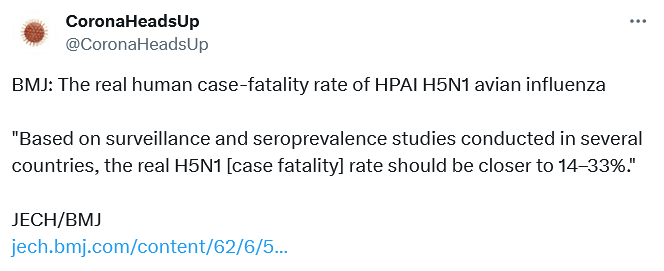
https://Jech.BMJ.com: The real case fatality rate of H5N1
Update 13 – 2nd March 2024 – Now CATS test positive for H5N1 avian flu in Texas
Update 14 – 2nd March 2024 – H5N1 avian flu confirmed in cattle in New Mexico
www_aphis_usda_gov_news_agency_announcements_usda_confirms_h
USDA Confirms Highly Pathogenic Avian Influenza in Dairy Herd in New Mexico
